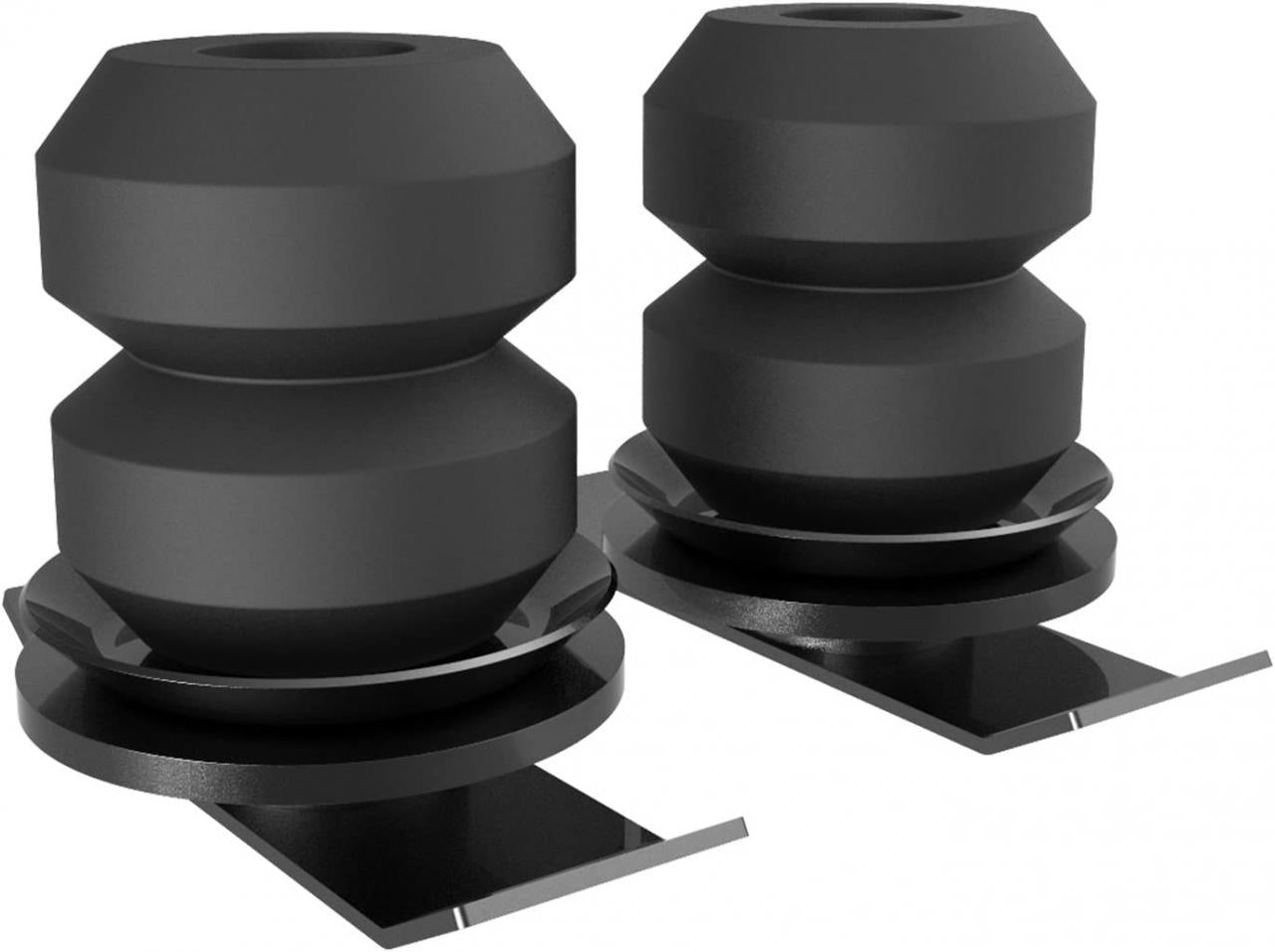Best Bump stops for off-roading?
INTRO
What are bump stops?
Whether you call them bump stops, jounce bumpers or axle snubbers, it all means the same thing. We’re talking about a small-but-ever-important component that works together with your suspension and, in some cases, is part of the suspension on your car.
In the case of trucks and SUVs, most bump stops are mounted to the frame just above the lower control arm of an independent front suspension or somewhere between the frame and the axle tube on the rear. Bump stops can also be found inside the shock absorber or on the shock shaft.
Every type of suspension system includes some sort of bump stop. This small, simple device protects the vehicle when the frame slams down onto the axle. Basically, it prevents metal from hitting metal which helps to protect the various suspension components.
Bump stops for trucks come in various shapes and sizes and are usually made of microcellular foam. This type of foam rubber absorbs some of the impact when the suspension bottoms out.

Why are factory bump stops inadequate for off-roading?
Factory bump stops are installed on the off chance that the vehicle might bottom out if the truck is carrying a little too much weight in the bed. If you’re experiencing the odd bump down on the jounce bumpers, it means it’s probably time to get a suspension upgrade to assist with the load - like a Timbren SES kit.
But when you take your truck off-road, the rough terrain you’ll encounter will be too much for your factory bump stops to handle. Not only that, the harsh jounce stops that occur constantly are hard on the driver as well.

How can I prevent bottoming out while driving off-road?
News flash! There is no way you can avoid maxing out your suspension (aka bottoming out) while driving off-road! The chances of ‘bottoming out’ your suspension while navigating rough, off-road terrain is even greater than driving on-road.
“Okay...” you may be wondering, “if that’s true, what’s the purpose of an off-road bump stop?”
Simply put, there are basically 3 reasons to use off-road bump stops:
- Protection
The main purpose of a bump stop is to serve as a cushion when the suspension finally bottoms out. That way, there’s always a bit of protection to prevent metal from hitting metal or, in some cases, prevent the frame from traveling too far. In either case, bump stops help avoid damage to the suspension or the chassis, as well as preserving the integrity of the shock absorbers.
- Ride quality
The most common type of bump stop used on production vehicles is made from rubber. These are simple to employ and low in cost. A common aftermarket step-up from rubber stops is urethane. But neither style of bump stop offers great ride quality. A better alternative to factory bump stops is Timbren’s Active Off-Road Bumpstops which provide a soft, comfortable bounce when the vehicle bottoms out.
- Control
If you’re planning to leave the pavement and cut to the off-road trail, you’re quickly going to find that factory bump stops are woefully inadequate for the task. Not only is the ride quality poor, but the loss of vehicle control can be rather dangerous. The best way to regain control of your off-road vehicle requires the use of bump stops designed specifically for rough terrain.

What are the best off-road bump stops for trucks and SUVs?
In order to bring things into focus, let’s list and compare various styles of off-road bump stops.
Essentially, there are 4 types of bump stops designed for off-road use:
- Active Off-Road Bumpstops (Timbren)
- Wheeler Superbumps.
- TeraFlex Speedbump bump stops.
- Hydraulic bump stops (Bilstein or King)
If money is not an object, then hydraulic bump stops are a possible choice for you. These stops are filled with shock oil and nitrogen, which allow you to fine-tune them to suit your off-roading needs. To install these stops, you’ll need a custom shop specializing in made-to-measure installation, since this type of stop works best with your existing shock setup. The two most popular brands of air bumps are Bilstein and King, which average around $700-1,000 USD for a pair. Bilstein M 9100 (Bump Stop)-Suspension Multi-Purpose Bump Stop (F4-BE5-G722-M0) comes with a 90-day limited warranty.
If you want stops that look and act like hydraulic stops, but work like your factory stops, then you could go with TeraFlex Speedbumps. When installing these stops, you’ll need to do some customization to get them to fit. Average price: $500.00 USD (pair) which includes a Limited Lifetime Warranty.
Wheeler Superbumps resemble the factory version but are much taller and offer better ride quality. Average price: $150 USD (pair) which includes a 12-month limited warranty.
Active Off-Road Bumpstops are made by Timbren Industries. They’re constructed from natural rubber and are available in different shapes and sizes. Depending on which truck you drive, you can find a custom-made off-road kit to fit your particular vehicle. If you’re able to remove a bump stop, then you’re able to install Active Off-Road Bumpstops. $225 USD (pair). Each pair comes with a No B.S. Lifetime Warranty.
Active Off-Road Bumpstops help maintain better ride quality on rough terrain, as well as giving the driver more control over the vehicle. Even though any of the nitrogen-filled bump stops are designed to absorb the constant stress of bottoming out, the cost can be a problem for many.

How do Active Off-Road Bumpstops stack up against the competition?
Are Active Off-Road Bumpstops better or worse than the competition? You need only take a moment to listen to those who are currently using the product...
https://www.youtube.com/watch?v=o9qiPPRBK7Q
https://www.youtube.com/watch?v=fEQpg3sEymo
https://timbren.com/p-35852-active-off-road-bumpstops.html
Click here for more information on Active Off-Road Bumpstops.
